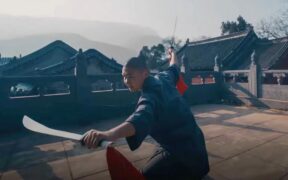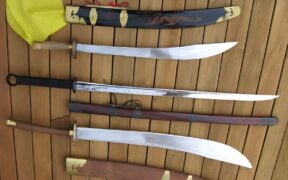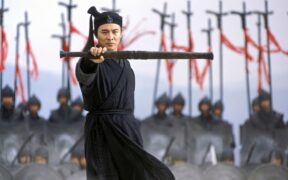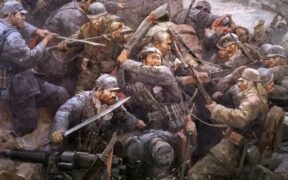Our content features commercial links to our products, committed to transparent, unbiased, and informed editorial recommendations. Learn More
Short Chinese Swords: Small Blades with Big Impact
NO AI USED This Article has been written and edited by our team with no help of the AI
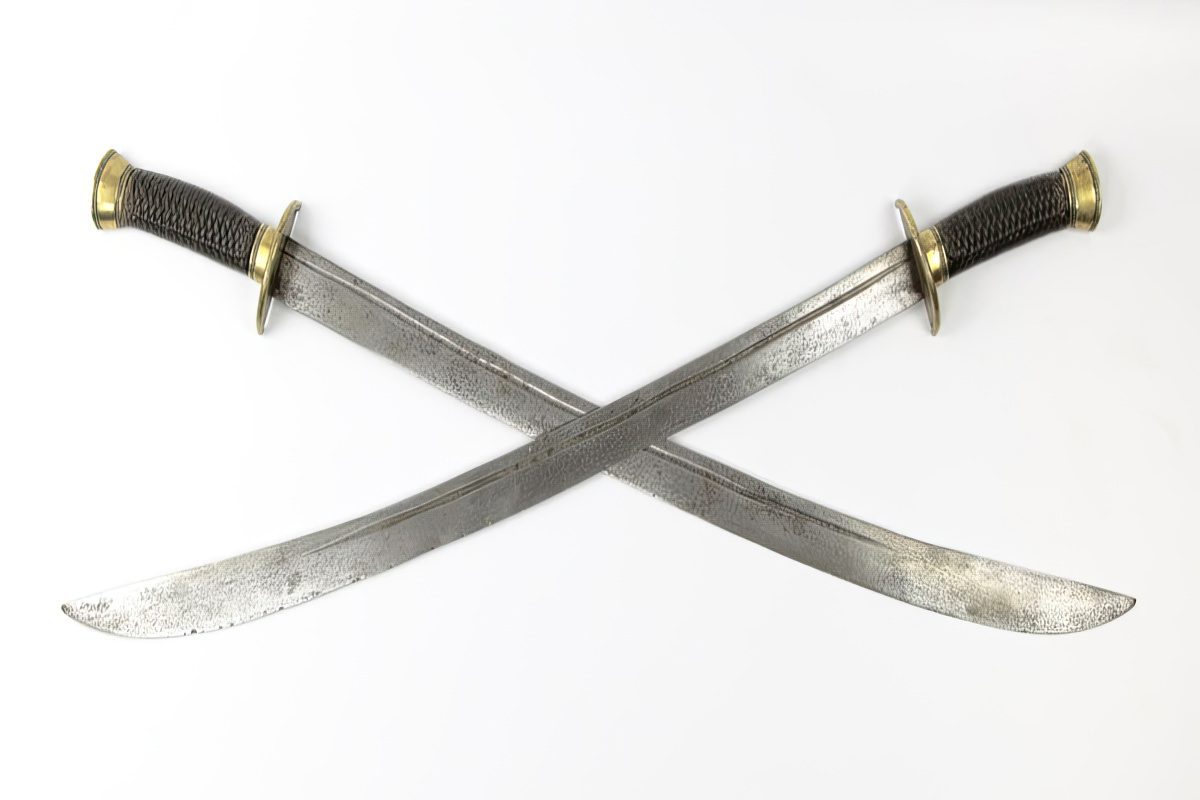
China is the birthplace of many different types of swords that can range even as short as 15 to as long as 78 inches (40 to 200 cm) long. A popular opinion today is that the bigger the sword, the more effective it can be. Contrary to that belief, no matter their size, short swords are equally deadly when put into the hands of a trained swordsman.
Short Chinese swords might not be used for warfare today, but they are more popular than long Chinese swords in various Chinese martial arts. In this article, we will cover the Chinese short swords, which are generally shorter than 23 inches (60 cm), and explain their history, use, and importance in Chinese history.
Duan Jian

The Duan Jian is a short Chinese Jian sword, usually 15 to 20 inches (40 to 50 cm) long. It is a double-edged bladed weapon with a sharp pointy tip that might be one of the earlier types of Jian as they can be made out of bronze and possibly evolved from the Chinese dagger.
Historically, it was mostly used for ceremonial purposes as it can be highly ornamented. As metallurgy advanced, the bronze sword was replaced with iron and steel. For example, the Longquan sword evolved into a bigger and more popular type of Jian, especially during the Han Dynasty with its high-quality Han Jian.
Hook Sword

Although the Hook sword is usually much longer than 23 inches (60 cm) long, Shaolin monks used shorter versions to defend themselves from danger. It is a very popular training weapon to use in Chinese wushu or kung fu and equally effective in battle thanks to its unorthodox fighting stance that could disarm opponents.
Butterfly Sword
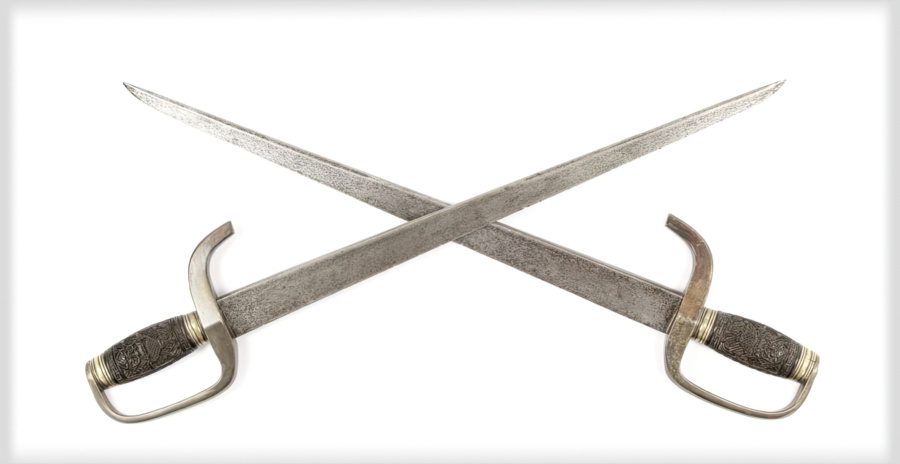
The Butterfly sword, sometimes called Hudiedao, is the most popular Chinese short sword, which ranges around 12 to 16 inches (30 to 40 cm) long and is most often used in the martial art Wing Chun and seen all over modern media. It came about at the end of the Ming Dynasty and saw a lot of use during the Qing Dynasty.
It is similar to the Pai Dao sword, influenced by western culture in Hong Kong. This sword was cheap to produce and could have a steel blade, making it battle ready. It was mostly a defensive tool used by civilians or local town militias because it could be carried in one scabbard. It was used in combat, dual-wielded and primarily as a slashing weapon.
Zhibei Dao
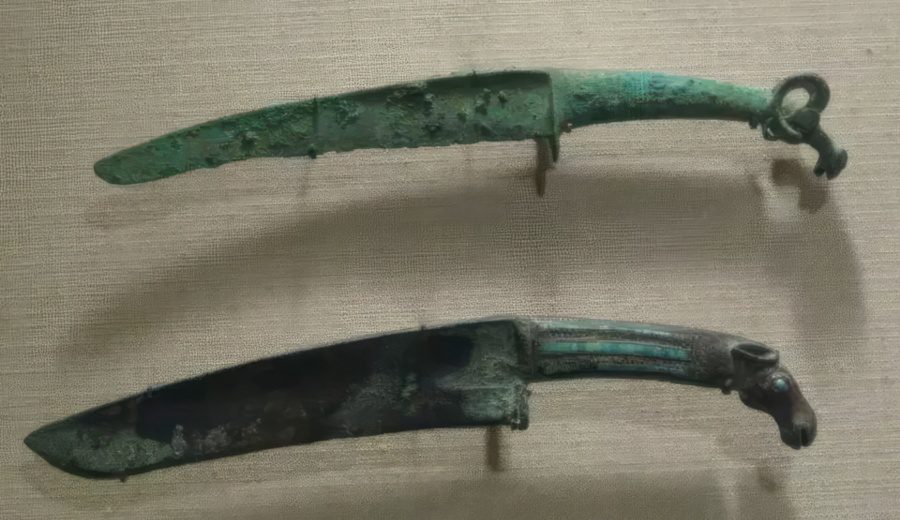
The Zhi Bei Dao, a one-handed, single-edged Dao sword that originated in the 15th century BC, is one of the oldest known Dao swords. These were originally fashioned of bronze, but as metallurgy developed and harder metals were available, they grew in size and use.
Short blades like the Zhi Bei Dao, or single-edged swords, gradually supplanted the Jian due to its superior efficiency, despite the Jian’s limited use.
Tuan Lian Jian

The Tuan Lian Jian Chinese shortsword was crude-looking and cheaply hand forged. It was about 12 to 16 inches (30 to 40 cm) long with a sharp double edge blade. It was easy to carry and used as a defensive tool by the locals against thieves. It was a secondary weapon, just like the Japanese Wakizashi.
Shuang Jian

The shortest Chinese double-edged sword type of a full tang Jian is the Shuang Jian. Its blade length is slightly higher than a dagger, making its overall size around 12 to 19 inches (30 to 50 cm) long. They can have decorative stainless steel blades or even high-carbon steel to be used for defensive purposes.
These swords were used as diplomacy gifts, highly ornamented tools of rank, and even used in many sword dancers for entertainment purposes, usually dual-wielded. It would be around the same size as a Tanto if we compare it to a Japanese sword type.
Nan Dao
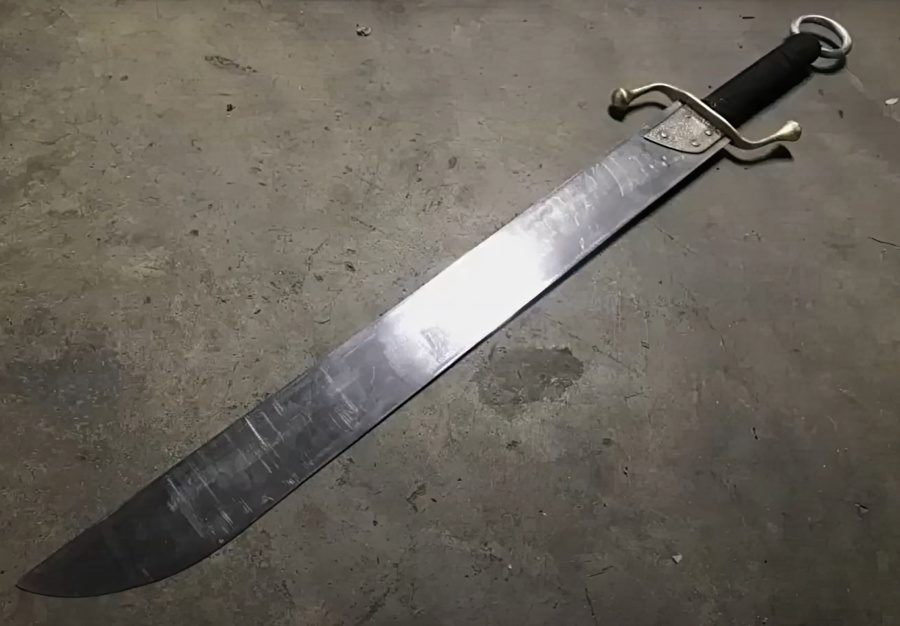
The most popular entertainment short sword in Chinese Wushu is the Nandao which can be around 20 to 23 inches (50 to 60 cm) long. It is primarily used for martial arts or sparring, giving it the same status as the Tai Chi sword.
Although that is the case, some believe it could have been used in warfare and be as effective as other steel swords in combat.
Duan Dao

The Duan Dao is the short saber of Chinese swords. It is the same as the Dao broadsword type but smaller at around 20 to 23 inches (50 to 60 cm) long. As seen in famous depictions of battles through art, the secondary Dao has a downward curved blade commonly used by Chinese soldiers.
It is a sabre that could be worn on belts even when rifles were the primary weapon of choice because it was light and easy to create. Its biggest characteristic is the pistol-like pommel.
Gunbei Shuangdao
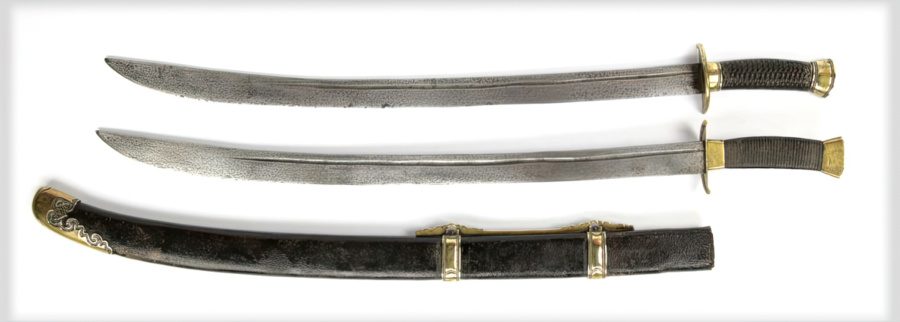
Gunbei Shuangdao is any type of one-handed Dao that can be used dual-wielded. Although it can be anything from a regular Liuyedao or Yanmaodao, the blade has to be curved and made into a shorter version at around 23 inches (60 cm) long.
These shorter Dao’s were made this way so they could easily be wielded with both hands without inflicting self-injury. Maybe they could serve as a defense too, but their popularity is in martial arts, entertainment dances, or ceremonial tools that might feature Damascus steel.
The Importance of Chinese Short Swords
In sword battles, longer does not always mean better in certain scenarios, making these short swords highly useful and as important as the long ones.
These Chiense short swords were cheaper to create, meaning they would be spread out more. They were smaller and could easily be carried, something often seen during the Tang Dynasty. In times of chaos and havoc filled with rebellions and revolutions, the short swords were actually the biggest defensive tools of the civilians, as can be described by Shaolin monasteries and Buddhist monks.
Although bigger swords were in higher demand during the Song Dynasty due to the high use of cavalry, Chinese short swords were the most used swords during the late Qing Dynasty as personal defense tools. Even their unorthodox fighting methods, when mastered, could do very well against a samurai sword like the Japanese Katana.
